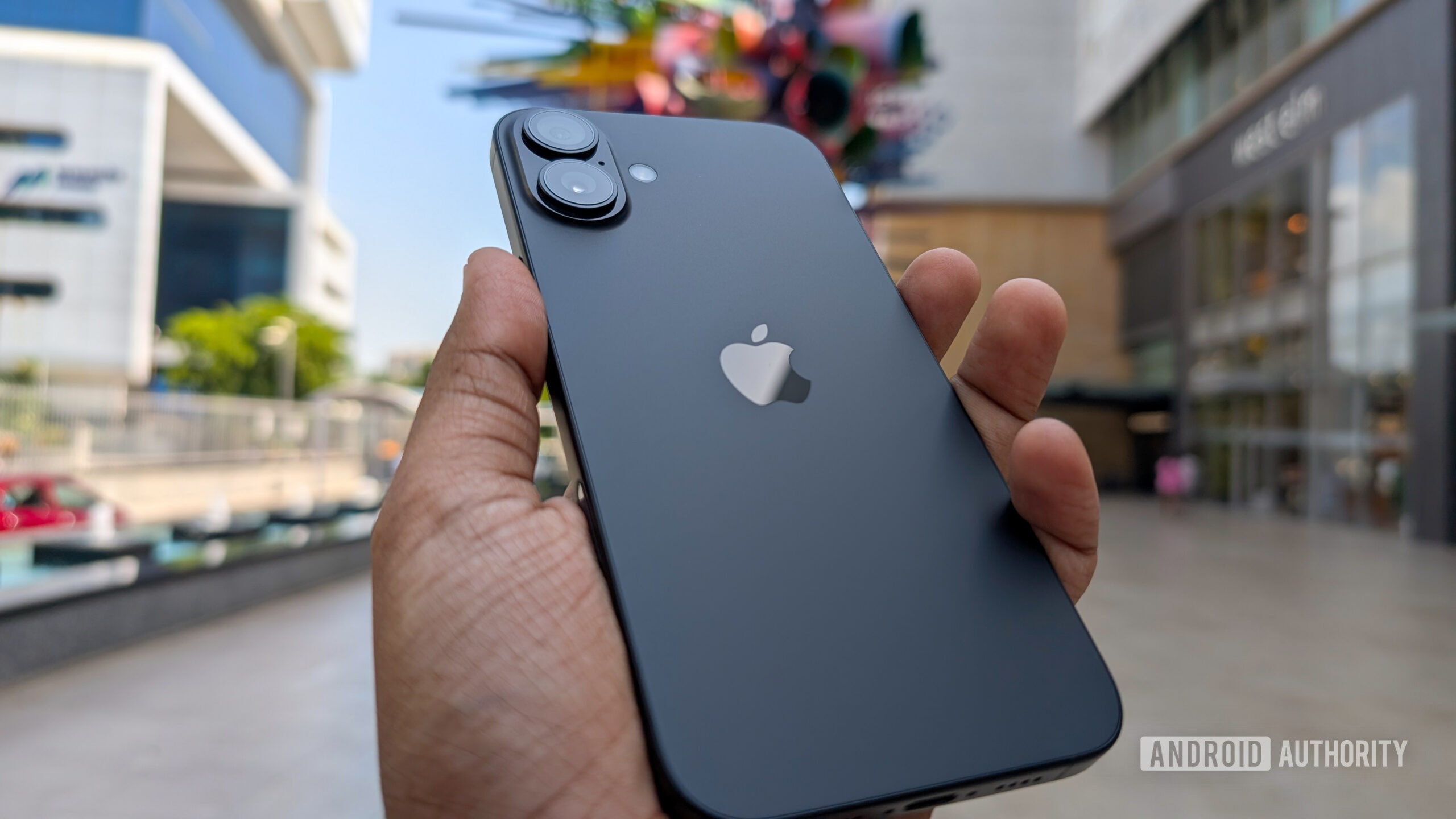Affiliate links on Android Authority may earn us a commission. Learn more.
iPhone 16's 'shocking' new battery adhesive removal method is better than Android's
Published onSeptember 23, 2024

- The iPhone 16 and 16 Plus feature a new battery adhesive that reacts to electrical current, making battery replacements easier.
- The adhesive debonds when applying no more than 30 volts on the designated spots, allowing you to remove the battery smoothly.
- After installing a new battery, applying some pressure on it will reactivate the adhesive and make it stick.
Apple has been making its iPhones more repairable lately. With iOS 18, for example, the company introduced a calibration tool that allows users to optimize third-party iPhone components. Meanwhile, the iPhone 16 and 16 Plus pack a new battery adhesive that debonds when it detects an electrical current. This makes replacing the battery much easier compared to the pull tab method adopted by most flagship Android phones.
iFixit has demonstrated how the new battery adhesive works on the iPhone 16 and 16 Plus. After removing the iPhone’s back cover and disconnecting the battery from the board, users should find the two metallic spots shown in the video above (starting at 2:36). They can then connect alligator clips to them and apply no more than 30 volts of electricity for a few seconds. This will cause the adhesive to debond, and the battery should smoothly fall out. Once a new battery is in place, users can simply apply pressure to reactivate the adhesive.
This new battery replacement method should make the process safer and more intuitive to users, as pull tabs aren’t always cooperative. Notably, however, the iPhone 16 Pro and 16 Pro Max miss out on this change, as Apple has only applied it to the standard variants. Regardless, we advise you not to open your iPhone or apply an electrical current if you’re unfamiliar with the repair process. You wouldn’t want to damage your device further and pay a professional even more to restore its functionality.